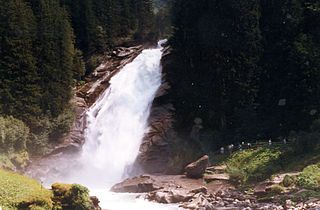From Guest-Blogger Alia Haley: Ten Green Vacation Camping Tips

Some people even decide to totally rough it out under the evening stars, with just a bivi bag for company. But whatever style you choose, you want to make sure your camping methods are always eco-friendly, so that you do your part to protect the environment. After all, you want future generations to enjoy camping just like you… don’t you?
Here we’ve set forth 10 green holiday tips you can use on your trip.
Use Eco-friendly Gear
If you don’t go camping often, you’ll want to rent your camp gear, but if you frequently go camping purchase used camping gear, or items made from recycled materials.
Do Without
The purpose of camping is to commune with nature and you can’t do that unless you leave your gadgets at home. Don’t take your TV or computer. If you do take a mobile phone don’t stay on it all the time. Enjoy your time outdoors. Avoid using battery operated devices, but if you do, use solar devices to charge your device; again bought second hand.
Try Camping Close to Home First
Find a camp area that is close to home. There are likely to be many different camp areas nearby and you don’t have to travel far to enjoy a few nights under the stars. You can even camp in your own backyard.
Leave No Trace
Take bags and bins to remove the trash you create when on your camping trip. This allows everyone to enjoy a campsite. Don’t remove branches, cut trees, pick flowers or do anything else that could disturb the area.
Contain the Fire
Find a good way to contain your bonfire; if you are even allowed to light one. You can use rocks, or dig a pit. Just do whatever it takes to minimise your chances of starting a forest fire. If in a campground, build the fire in a designated pit. Make sure you keep your fire small and be sure to keep water or dirt nearby to put the fire out.
Use Reusable Dishes
Don’t buy throw away dishes. Get camp dishes you can reuse. Reusable items cause less waste and don’t harm the environment as much.
Organic Sprays
Use non-toxic and natural sunscreens and bug sprays. This will keep you from getting additional toxins on your body. Plus using non-toxic sunscreens or bug sprays means you place fewer toxins in the environment.
Soft Soled Shoes
Hard soled hiking boots can damage the environment. Soft soled shoes are a better choice because they don’t damage the green areas, or the wildlife as much. This may seem like a small thing, but nice walks can soon lead to unsightly tracks as more people scuff up the trail.
Remain on the Trail
Follow the trails and the trail markers and stay off the plants. Wandering off the trails can damage the wild grass and wild flowers.
Find the Perfect Campsite
When you camp away from home, choose a professional campsite. These are parks with designated areas for campfires and tents. They will also be geared up to deal with your waste and energy needs.
Conserve Energy
You’ll want to use some sort of lighting, but you want to use the best possible option. Use LED lighting, which is the most efficient type of lighting available. LED lights use up to 90% less energy than other lighting options. LED lights are also brighter and can last about 600 hours.
Final Thoughts
The above are green tips that help you show your children how to be more environmentally conscious. Camping can be the best way to spend some bonding time together, and of understanding the world. But to do it right you really do need to be as eco-friendly as possible.
